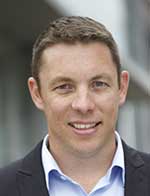
There are many reasons for a healthcare institution to share knowledge. Whatever the need, some of today’s most modern technologies can provide a simple and efficient solution.
Last month we looked at technologies for paediatric care. This month we look at solutions for knowledge sharing and technologies for clinical and surgical monitoring.

“Universities, medical centres and technologically advanced hospitals are using network video to enhance student training and provide continuing education for their staff,” says Clifton Greeff, national surveillance business manager at Duxbury Networking, distributor of Axis surveillance technology.
Fanshawe College in London, Canada, uses clinical simulation in order to provide realistic training scenarios for aspiring healthcare professionals. During simulation, students interact with actors or high-tech simulation mannequins portraying patients with clinical issues and independently provide care. The sessions are recorded using high-resolution cameras and microphones to capture audio. Afterwards, students and teachers can reflect on and review their performance – ultimately improving their professional competence.
The advantages of streaming video to a screen?
Viewing live camera images can enrich lectures in auditoriums and connect people all over the world. Hospital auditoriums and conference rooms are used to share knowledge between different hospital departments, other hospitals, scientific researchers, and a broader external community.
For leading hospitals, this open exchange of information meets three crucial needs:
1. To keep its team updated in order to continuously improve service quality. The continuous development of healthcare professionals depends on experience sharing with colleagues from other institutions and other parts of the world. This type of collaboration is important for raising care standards.
2. To improve the hospital’s brand reputation, position its relevance to investors, attract affiliated healthcare professionals, and promote it to other stakeholders such as the press.
3. To support the hospital’s social media communication.
How can I broadcast seminars and other events?
The AXIS V59 Network Camera Series was developed exclusively to meet the requirements for online event broadcasting with high-quality audio and video. These are cameras not created for security purposes, but to generate content available on the Web or to record sharable files.
For symposium broadcasts to a limited audience, online access can be controlled by password. On the other hand, if the institution wants to open an event to public participation, the video can be seen on the Web without restriction.
AXIS V59 can be installed on tables, walls and ceilings, requiring only the use of a network cable. This flexibility allows the camera to be taken anywhere, where it can be controlled from a web platform with the use of desktops, laptops, tablets or smartphones.
Security cameras for teleconferencing purposes?
“Traditional surveillance cameras are not optimal for teleconferencing. Cameras developed exclusively for this type of data capturing and transmission, such as the AXIS V59 series, with top quality audio and video, help bring together professional experts in different fields to discuss clinical cases, almost as closely as if they were all in the same room,” says Greeff.
In addition, video conferencing systems can help hospitals and clinics reduce unnecessary business trips, saving on travel expenses, increasing staff productivity, and minimising environmental impact through lower CO2 emissions.
“Today, video surveillance cameras can also be used to monitor and assess patients. Some pioneering institutions are already doing just that,” says Greeff.
UZ Leuven, one of the largest hospitals in Belgium, has 1995 beds and a staff of more than 8800 professionals. Its Sleep Lab scientifically analyses sleep patterns and behaviour, and video plays an important role in supporting their analysis.
Two cameras (one of them with a microphone) are integrated with the polysomnographs in all ten rooms. During the night, from another room, the medical and nursing staff see in detail the images of patients sleeping in the dark, and hear the noises they produce. The 20 cameras offer visual support with a synchronisation of less than one second between the signals being recorded by the polysomnograph. Healthcare professionals can even zoom in the cameras for greater detail.
Another example of how cameras can serve as an innovative part of patient treatment comes from a child psychiatry clinic in Finland. At North Karelia Central Hospital, videos are considered an important tool in the treatment of relationship problems between parents and children, especially during the night. Therefore, the images need to be sharp even in the dark.
Along with software from Milestone, an Axis partner, and professional microphones from Shure, high-quality Axis cameras produce clear image detail even when zoomed in for a close-up. Hospital personnel can then clearly see both the actions of the parents as well as the child’s facial expressions.
Integrated with automated systems for clinical monitoring
“It is important that the digital surveillance cameras chosen by a hospital or clinic have an open platform for integration. The main standard for interoperability between video surveillance devices is ONVIF. When the automated system sensors detect, for example, that a patient has urinated in bed, this alert can be transmitted to the assistance team together with a corresponding camera image,” says Greeff.
| Tel: | +27 11 351 9800 |
| Email: | [email protected] |
| www: | www.duxbury.co.za |
| Articles: | More information and articles about Duxbury Networking |
© Technews Publishing (Pty) Ltd. | All Rights Reserved.